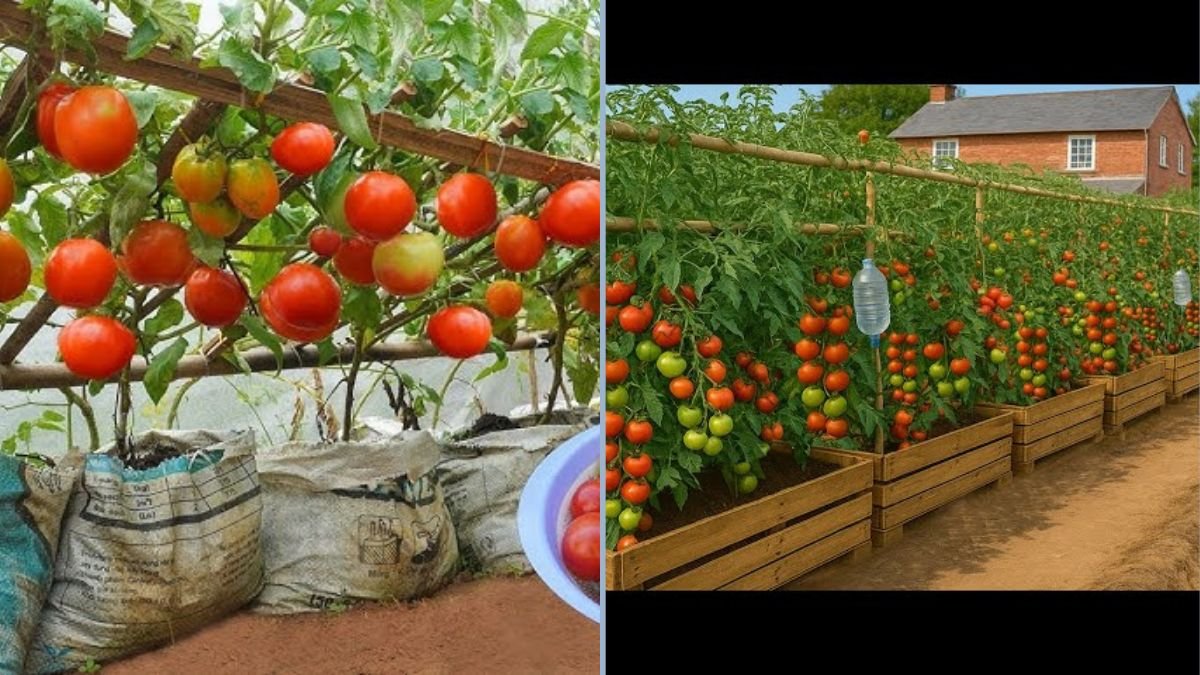Tomatoes are one of the most rewarding vegetables to grow. They’re versatile, nutritious, and a staple in countless dishes—from fresh salads to sauces, stews, and salsas. Yet, for many gardeners, tomato cultivation can be tricky. Limited space, climbing vines, and uneven yields can make growing this beloved vegetable challenging.
What if there was a simple, affordable, and highly effective method that could make your tomato plants flourish? That’s exactly what happens when you use wooden pallets as a growing system. With just a few pallets, creative soil management, and some basic gardening know-how, you can transform your small garden space into a tomato jungle with robust, wild growth.
This blog explores how to grow tomatoes using pallets, including step-by-step instructions, soil tips, maintenance strategies, and harvesting techniques to maximize yield.
Why Use Pallets for Growing Tomatoes?
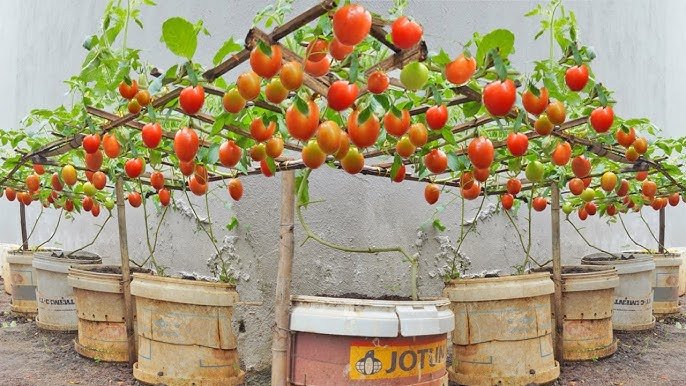
1. Cost-Effective and Accessible
Wooden pallets are often available for free or at a low cost. Repurposing them as garden structures reduces the need for expensive raised beds or trellises.
2. Space-Saving
Pallets allow vertical or stacked gardening, ideal for small spaces, balconies, or backyard gardens. Using vertical space helps plants grow upward rather than sprawling across the ground.
3. Better Drainage
Pallets naturally elevate the soil, which improves drainage and prevents waterlogging—critical for healthy tomato roots.
4. Enhanced Plant Support
Tomatoes are climbing plants that require sturdy support. Pallets act as natural trellises, guiding vines upward and keeping fruits off the ground.
5. Sustainable Gardening
Repurposing pallets reduces waste and promotes an eco-friendly approach to gardening.
Understanding Tomato Growth
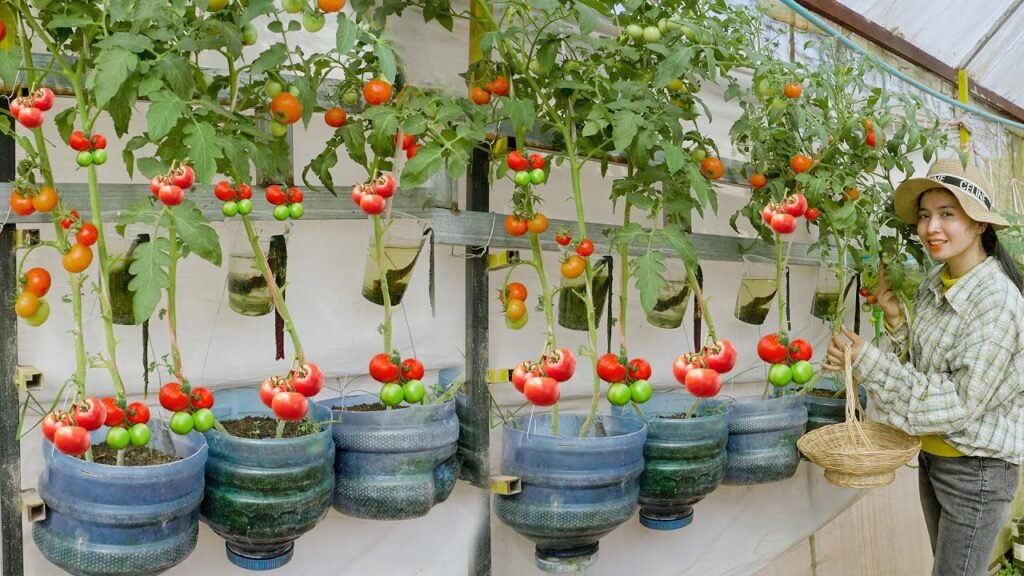
Before diving into pallet gardening, it’s essential to understand tomato growth habits:
- Climbing Vines: Tomatoes naturally climb and need vertical support for optimal growth.
- Sunlight Needs: Full sun exposure (6–8 hours daily) is essential for large, healthy fruits.
- Soil Requirements: Well-draining, nutrient-rich soil is critical.
- Fruiting Timeline: Tomatoes typically take 60–100 days to mature depending on variety.
- Pollination: Natural pollinators like bees enhance fruit set, though tomatoes are self-pollinating.
Knowing these growth traits helps in designing the pallet setup and care plan.
Materials Needed
To grow wild, productive tomatoes using pallets, gather the following:
- Wooden pallets – Free or inexpensive; ensure they are safe for gardening (untreated wood is best).
- Potting soil or garden soil – Rich, fertile, and well-draining.
- Compost or organic fertilizer – Supports vigorous growth.
- Tomato seedlings – Choose determinate or indeterminate varieties depending on your space.
- Mulch – Straw, leaves, or coconut husk to retain moisture.
- Twine or garden clips – To secure vines as they grow.
- Watering tools – Hose or watering can.
Step-by-Step Guide to Growing Tomatoes Using Pallets
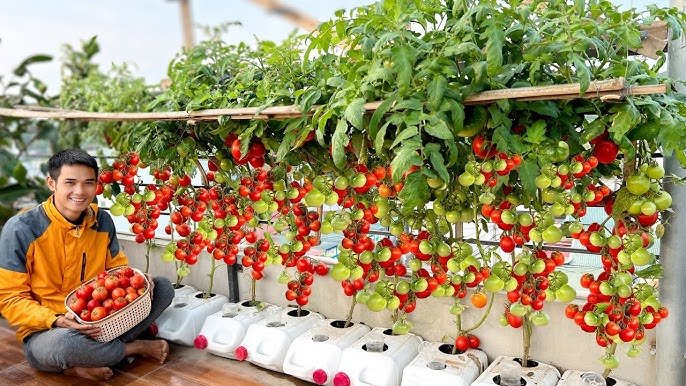
Step 1: Select and Prepare the Pallets
- Choose sturdy, clean pallets free from chemicals or treated wood.
- Stand the pallets vertically or lay them horizontally depending on your garden layout.
- If vertical, reinforce the base for stability to withstand wind and plant weight.
Step 2: Prepare Soil and Compost
- Mix garden soil with compost or well-rotted manure for rich nutrients.
- Fill pallet gaps or attach grow bags/containers to the pallet to hold soil.
- Ensure soil depth is at least 8–10 inches for strong root development.
Step 3: Plant Tomato Seedlings
- Position seedlings in the soil pockets or containers at the base of the pallet.
- Space plants 12–18 inches apart to allow airflow and prevent overcrowding.
- Water gently after planting to settle the roots.
Step 4: Position Pallets for Sunlight
- Place pallets in a sunny location receiving 6–8 hours of light daily.
- Vertical pallets can face south (in the northern hemisphere) to maximize exposure.
- Rotate if necessary for even growth.
Step 5: Support Tomato Vines
- Use twine, clips, or small stakes to secure vines to the pallet structure.
- Guide young shoots upward to encourage vertical growth and prevent sprawling.
- Regularly check supports as plants grow heavier with fruits.
Watering and Care
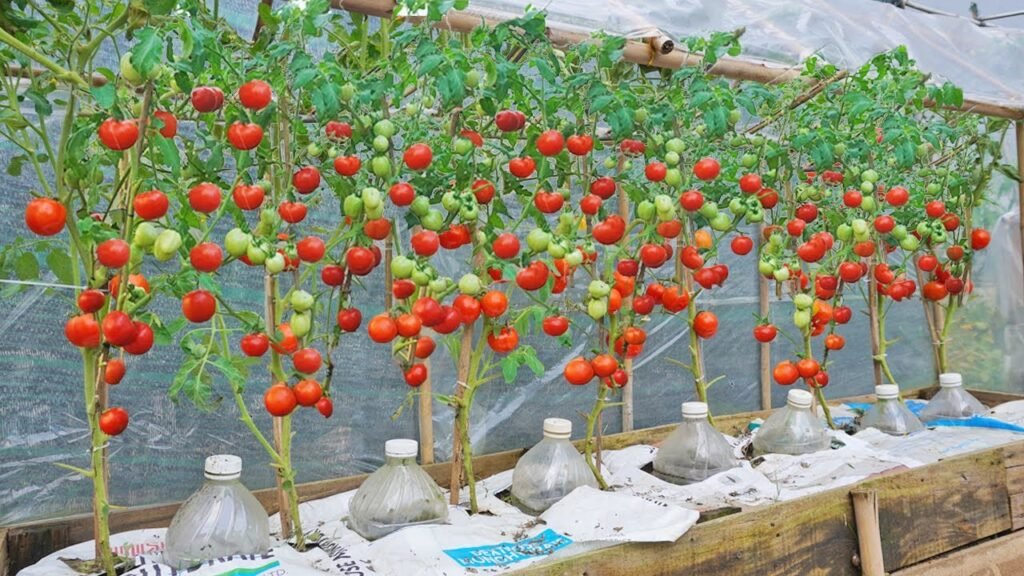
- Consistency is Key: Water tomatoes deeply and regularly to maintain evenly moist soil.
- Avoid Overwatering: Too much water can cause root rot or split fruits.
- Mulching: Cover the soil with straw or dry leaves to retain moisture, suppress weeds, and regulate temperature.
- Fertilizing: Apply organic compost or slow-release fertilizer every 3–4 weeks to support continuous fruiting.
Pruning and Maintenance
- Pruning Suckers: Remove side shoots to channel energy into main stems and fruit production.
- Leaf Maintenance: Trim yellow or diseased leaves to improve airflow and reduce fungal risk.
- Pest Monitoring: Keep an eye out for aphids, whiteflies, or tomato hornworms. Use neem oil or manual removal if necessary.
Proper pruning and maintenance ensure a healthier plant and larger, more abundant fruits.
Harvesting Tomatoes
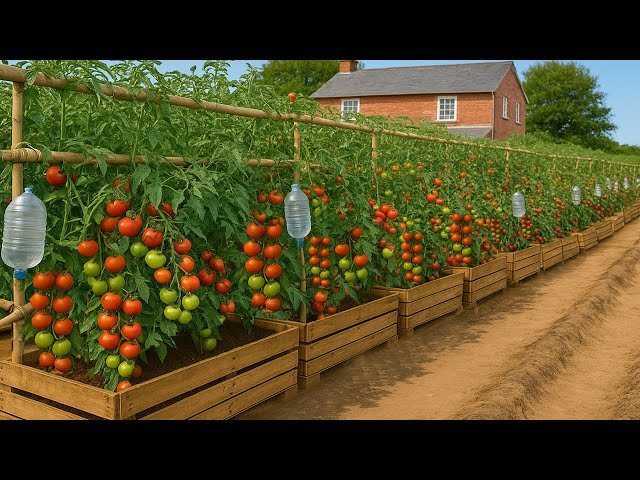
- Timing: Harvest when fruits are fully colored and firm. Avoid leaving overripe tomatoes on the vine.
- Method: Gently twist or cut fruits from the vine to avoid damaging stems.
- Frequency: Regular harvesting encourages more fruit production and prevents plants from overexerting energy on ripening fruits.
Advantages of Using Pallets
- Maximized Vertical Space: Ideal for small gardens or urban spaces.
- Increased Yield: Vertical support encourages plants to grow vigorously and produce more fruits.
- Reduced Pests: Elevating plants off the ground minimizes exposure to soil-borne pests.
- Cost-Effective: Repurposes old pallets instead of buying expensive garden structures.
- Eco-Friendly: Reuses materials and promotes sustainable gardening.
Tips for Maximizing Tomato Yield
- Choose the Right Variety: Indeterminate varieties produce more fruits over time, while determinate varieties are better for containers.
- Consistent Watering: Avoid drought stress, which can reduce fruit size and yield.
- Prune Strategically: Remove unnecessary shoots and leaves to enhance airflow and direct energy to fruits.
- Fertilize Regularly: Nutrient-rich soil ensures robust growth and larger fruits.
- Pollinate if Needed: Gently shake flowers or attract pollinators to improve fruit set.
Creative Ideas for Pallet Tomato Gardens
- Vertical Herb Garden: Combine tomatoes with herbs like basil or parsley for companion planting.
- Stacked Pallets: Create a multi-tiered vertical garden for maximum productivity.
- Container Attachments: Use pots or grow bags attached to pallet sides for additional planting space.
- Decorative Garden: Paint pallets for a colorful, aesthetic garden wall that doubles as a vegetable source.
Culinary Uses of Homegrown Tomatoes
- Fresh Salads: Juicy, flavorful tomatoes add brightness to any salad.
- Sauces and Salsas: Perfect for making pasta sauces, salsas, or soups.
- Roasted Dishes: Oven-roasted tomatoes bring out natural sweetness.
- Snacking: Cherry or small tomatoes are ideal for healthy, convenient snacks.
- Preservation: Can, freeze, or dry surplus tomatoes for year-round use.
Having homegrown tomatoes means fresh, organic fruits ready at your convenience.
Conclusion
Using pallets to grow tomatoes is a simple, creative, and highly productive method. With minimal investment and effort, you can transform a few old pallets into a thriving, vertical tomato garden that produces abundant fruits.
By following best practices for soil mix, pot/container management, pruning, watering, and fertilization, your tomato plants can grow vigorously and yield larger, more flavorful fruits. Vertical pallet gardens are perfect for small spaces, urban settings, and eco-conscious gardeners looking to maximize production while reusing materials.
Next time you see an old pallet lying around, don’t throw it away—turn it into a productive tomato jungle and enjoy fresh, homegrown tomatoes all season long!
